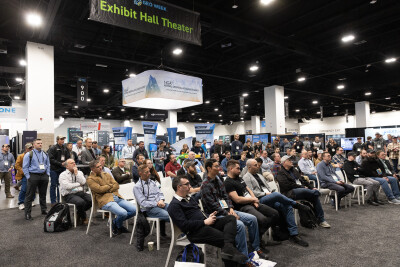A hammer may be a hammer, more or less (though of course there are many kinds of hammers), but all architecture engineering and construction software are not created equal, or for the same purposes. So sometimes, a firm will devise its own software or leverage someone else’s, to better achieve results on a project or for a very specific set of purposes.
Using software maker Dassault Systemes’ 3D Generative Innovator platform, CO Architects recently created a fully parametric modeling tool to help with the firm’s projects. The tool is being used on the Arizona State University’s (ASU) Health Futures Center, a 145,200 SF project, to provide real-time geometric feedback on various configurations of the primary surfaces and the structure of the facade.
Among other benefits, the tool has strengthened visualization of the project’s complex geometry and is helping stakeholders comprehensively understand the benefits of the unique design.
“The ASU HFC’s façade design had a very specific set of constraints, setting a framework for the variables. But we couldn’t evaluate the consequences or impacts of those variables in real-time, without thinking of new technology,” says Tanner Clapham, AIA, senior associate with CO Architects.
The idea of leveraging Dassault’s software for the purposes of the ASU project came out of necessity—Clapham and other team members would sit and look at 2D drawings with subcontractors, and changes on the drawings couldn’t always be accounted for. Team members found there was a ripple effect to the changes, that couldn’t be predicted or evaluated without the right tool.
“We wanted to be able to demonstrate the model and its basic elements, its constructability, and its cost, all in one place,” Clapham says, of the $80 million ASU project.
The trapezoidal-shaped undulating façade of the health sciences building is not just unique looking but functional, as it is intended for energy efficiency and occupant comfort. The building will have a hyper-flexible planning framework; the idea behind which is to support collaboration with the nearby Mayo Clinic and ASU by bringing together the university’s College of Health Solutions, College of Nursing & Health Innovation, and the Fulton Schools of Engineering, Entrepreneurship & Innovation with programs of Mayo Clinic.

Ground was broken on the project in April. The building is the first on what will be a new ASU campus in Phoenix.
As is the case with other companies in the industry, CO Architects is finding that the innovative approaches of new AEC software are driving change in the industry. The firm’s creations are reflecting the increasing complexity of today’s building design and the need for advanced software applications.
“We’re finding more and more that 2D drawings inadequately depict our design. The geometry is such that it does not lend itself to that form of representation. With ASU, we have an environmental design meant to lower solar heat gain on the east and west facades,” Clapham says. “That’s why we went in a 3-dimensional direction, to maximize shade.”
The ASU project, which is about 20 percent finished, is scheduled for completion in Fall 2020. Its own design needs led to the need for the software. The solution wasn’t clear, though, at first.
“Our office evaluated the benefit of using Dassault Systemes and tried to figure out if there were more good applications of its use,” says Jennifer Knudsen, AIA, LEED AP, BD+C, principal with CO Architects. “Our projects are the catalyst for trying something new.”
And the list of new innovative projects continues to grow for the architecture firm. Part of the reason is the social aspect as AEC software such as Dassault Systemes’ tools—these software solutions ease the process of selling a project when it is merely a concept.
The future creativity of CO Architects, and of other forward-thinking companies in AEC, will continue to be fueled by such complex projects, and by the tools supporting them.
“Software is streamlining the validation process of new, complex design,” Clapham says.






